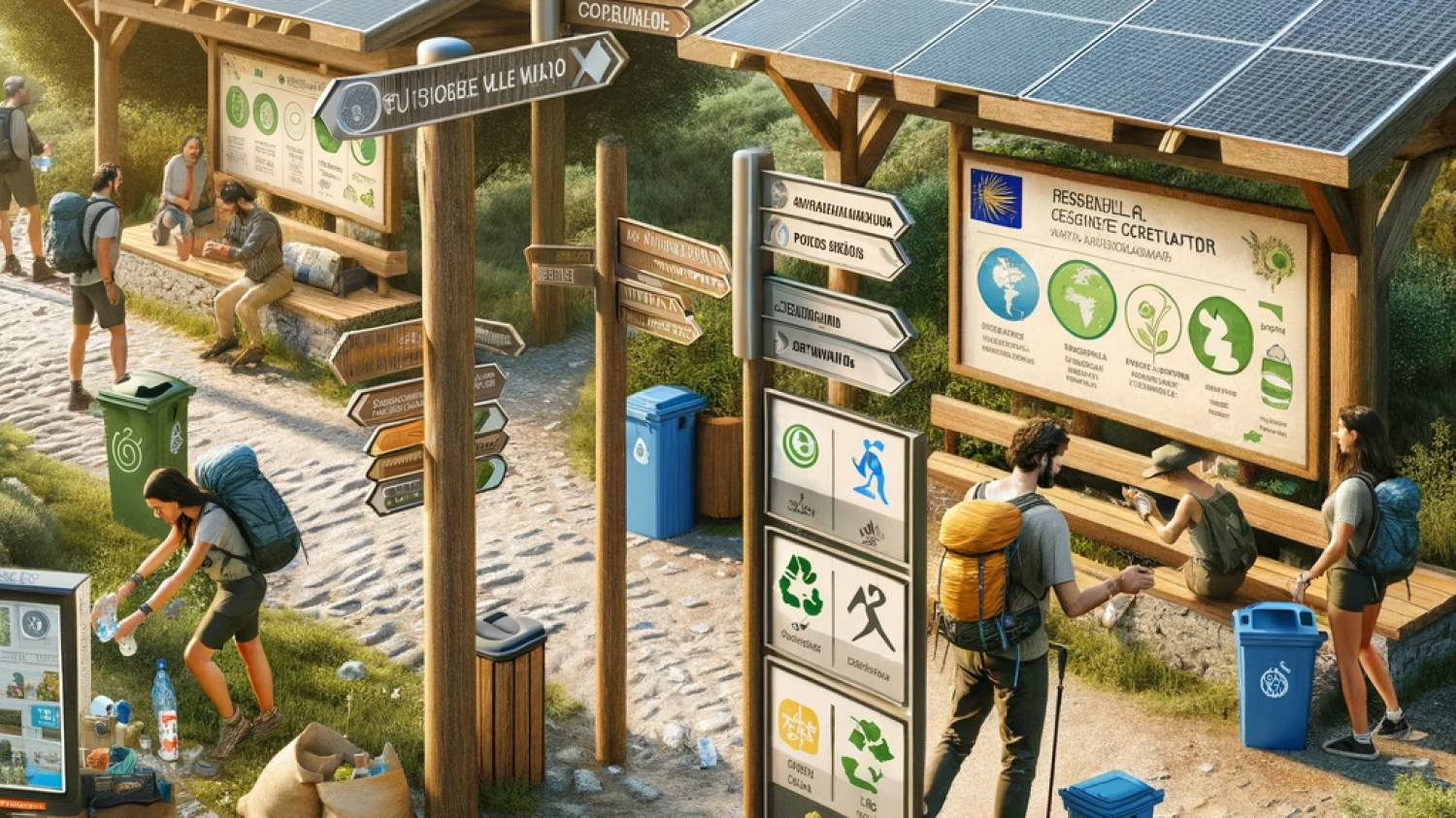
Create your own journey; Experience the best of Northern Spain at your own pace
This website uses its own and third-party cookies, for the proper functioning of the site and to generate usage statistics.
By continuing to browse we understand that you consent to our �ookie policy

2023-11-22
This ancient path that stretches through northern Spain to the city of Santiago de Compostela is a place of spirituality, reflection, and personal discovery for many. However, the growing number of pilgrims visiting the Camino has also raised environmental concerns. In this article, we will explore how to be an environmentally conscious pilgrim on the Camino de Santiago, sharing ecological practices that can help preserve this beautiful route for future generations.
The Camino de Santiago is a cultural and historical treasure, but it is also a fragile natural environment. As more pilgrims tread its trails, the pressure on the environment increases. Pollution, erosion, waste accumulation, and other negative impacts can harm the ecosystem and the natural beauty of the route. Therefore, it is essential for pilgrims to adopt ecological practices to minimize their environmental footprint and protect this invaluable heritage.
.jpg)
Becoming an environmentally conscious pilgrim begins before setting foot on the Camino de Santiago. Here are some practices you can adopt during your preparation:
1. Responsible Planning
Researching and planning your trip in advance is essential. This allows you to choose less crowded routes, where your presence will have a smaller impact on the environment. You can also opt for lesser-known paths that can offer a more authentic experience.
2. Pack Light and Responsibly
Packing only the essentials reduces the load you carry and decreases soil erosion. Moreover, carrying less weight reduces your resource consumption, as you won't need to purchase or replace unnecessary equipment.
3. Reusable and Recyclable Containers
Use reusable containers for carrying food and beverages, reducing the amount of waste generated during your pilgrimage. Make sure to carry a reusable bag to collect any litter you may find along the way and dispose of it properly in the appropriate bins.
Once you have started your journey, there are additional ecological practices you can follow to minimize your environmental impact:
4. Walking and Biking
The Camino de Santiago can be traveled on foot or by bicycle. If you choose to cycle, make sure to follow the rules and guidelines established for bicycles, avoiding damage to pedestrian paths. Additionally, you will reduce your carbon footprint by opting for a bicycle over motorized vehicles.
5. Sustainable Accommodation
Choose accommodations that promote sustainable practices, such as water and energy conservation, recycling, and waste reduction. Supporting businesses that care for the environment fosters a cycle of sustainability on the Camino.
6. Responsible Water Use
Water is a precious resource, especially in some parts of the Camino de Santiago. Use water responsibly for showering, washing clothes, and drinking. Avoid wasting water and refrain from using strong chemicals that may contaminate water sources.
7. Respect for Flora and Fauna
Maintain a safe distance from local flora and fauna. Do not pick flowers or plants, refrain from feeding wild animals, and avoid making excessive noise that could disturb the living beings inhabiting the Camino's surroundings.
8. Food Waste
Be mindful of the amount of food you purchase and consume. Avoid food waste, and whenever possible, buy local products to support local communities and reduce the carbon footprint of your diet.
One of the most significant concerns on the Camino de Santiago is waste accumulation. To be an environmentally conscious pilgrim, pay attention to waste management at all times:
9. Litter Collection
Carry a garbage bag with you and pick up any litter you encounter on the path, even if it's not yours. This will contribute to keeping the environment clean and appealing for other pilgrims.
10. Recycling and Proper Disposal
Separate your waste according to the recycling facilities available at your accommodation or rest areas along the Camino. If there are no recycling bins, try to carry your recyclable materials to the next town where you can recycle them properly.
11. Use of Reusable Products
Avoid using disposable products such as plastic cups and cutlery. Instead, carry reusable utensils and a refillable water bottle.
In addition to ecological practices, it is essential to be respectful and aware of local culture and communities:
12. Respect for Local Culture
Show respect for local traditions and beliefs. Participate in customs and rituals in a respectful manner and avoid behaviors that may offend local people.
13. Support for the Local Economy
Buy food and products from local businesses rather than international chains. This not only contributes to the local economy but also gives you the opportunity to taste authentic foods and crafts from the region.
The Camino de Santiago is a special place that has attracted pilgrims for centuries. To ensure that this beautiful route remains accessible for future generations, it is essential for all pilgrims to adopt ecological practices and respect the natural and cultural environment they encounter along the way. By being an environmentally conscious pilgrim, you can enjoy the Camino de Santiago experience meaningfully while contributing to its preservation. Every small effort counts in protecting this valuable heritage. Safe travels!
Back